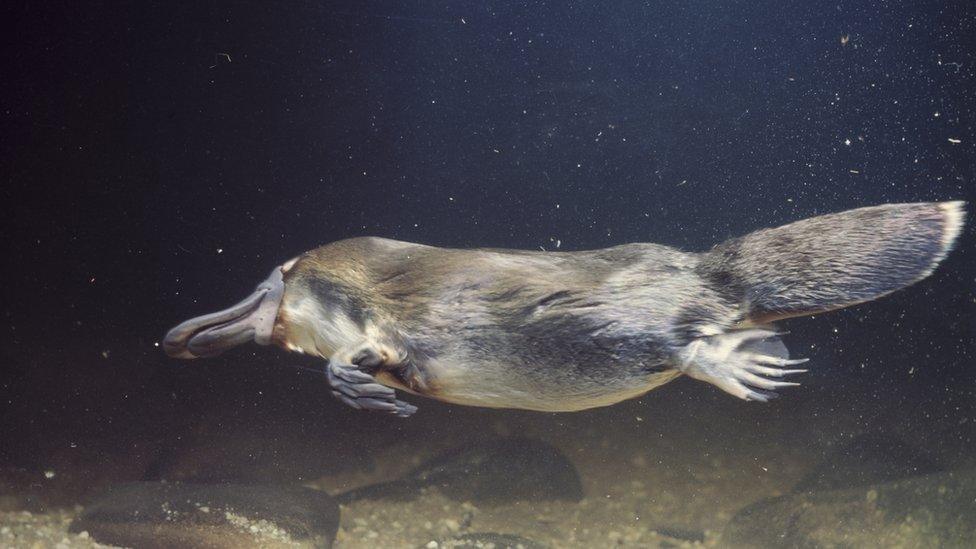Scientists discover that platypus fur glows under UV light
- Published
- comments

Did you know? A platypus can spend up to 12 hours each day hunting for food.
The Australian platypus is already a very interesting animal.
They have a beak and lay eggs but aren't classed as a bird, they are known as monotremes - mammals that lay eggs.
Now scientists have discovered something very interesting about them, their fur looks greenish blue in certain lights.
A study led by biologist Paula Spaeth Anich from Northland College found that under ultra violet lamps, platypus fur glows. This is an example of bio fluorescence, which is where short wavelengths of light are absorbed and longer wavelengths are re-emitted by living organisms.
The platypus is one of only three mammals that produces venom. The others are the slow loris and European mole.
The researchers had found in earlier studies that flying squirrels and opossums glow in ultraviolet light and wanted to see what else did.
They used three museum platypus specimens, two male and one female and put them under the light.
In natural light their fur appears brown but their fur glows green or blue under UV light!
Scientists have known that various plants, fungi, fruits, flowers, insects, and birds can glow, but animals are a very recent discovery.
The authors of the study said: "It was a mix of serendipity and curiosity that led us to shine a UV light on the platypuses at the Field Museum but we were also interested in seeing how deep in the mammalian tree the trait of biofluorescent fur went."
When on land, a platypuses webbed feet retract to reveal claws that help them walk.
The platypus, flying squirrels and opossums don't have much in common other than the fact they are nocturnal which means they sleep in the day and are active during the night.
Paula Spaeth Anich said: "it was intriguing to see that animals that were such distant relatives also had bio fluorescent fur."
The researchers think that nocturnal animals may be more likely to glow.
They don't know exactly why the fur glows but it is thought it could be to confuse predators.
- Published19 April 2013
- Published10 April 2019
